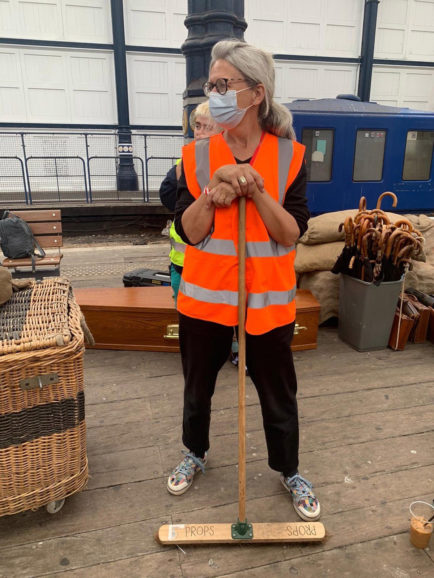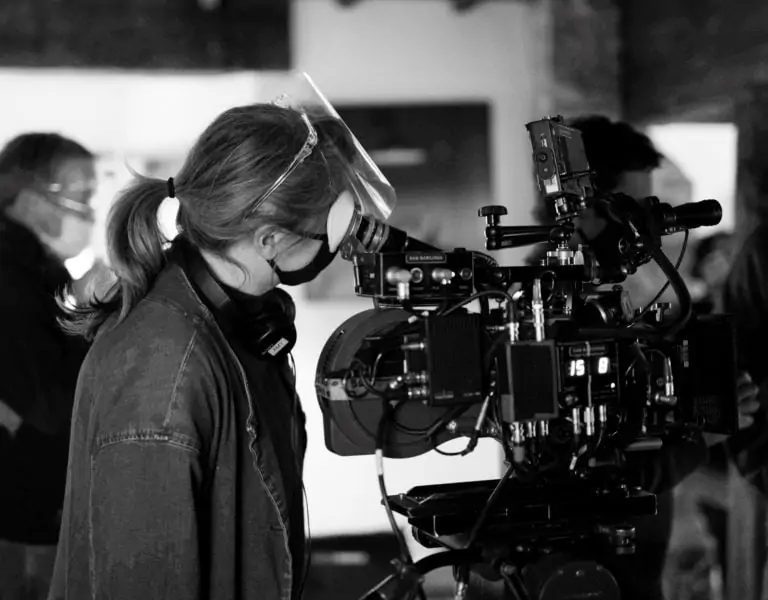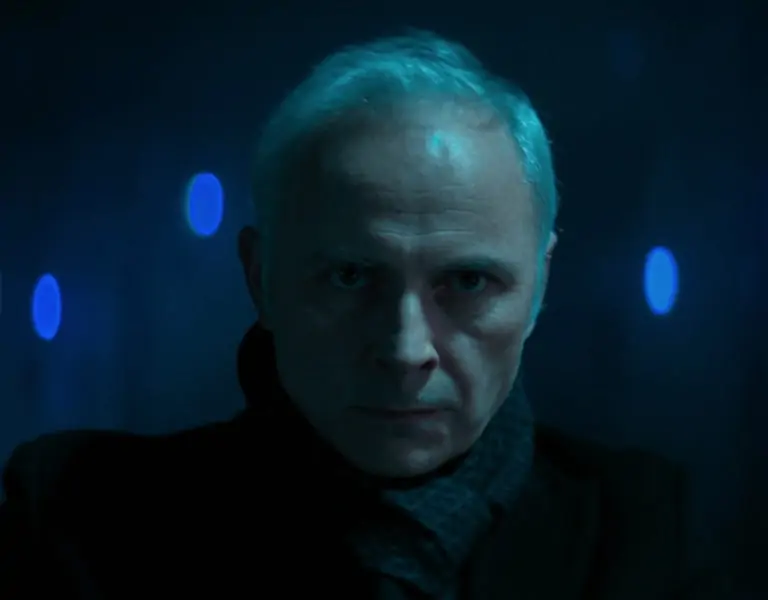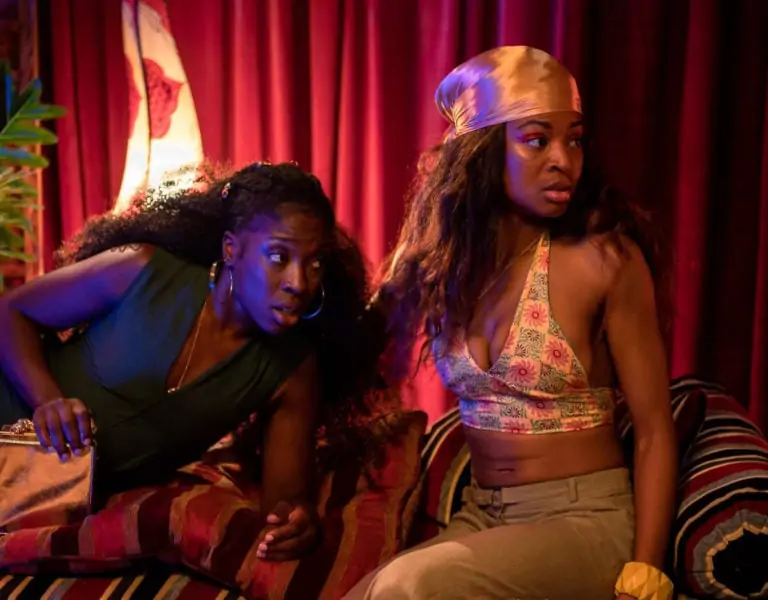CREATIVE BY DESIGN
Selected filmography:
Living (2021) – Dir: Oliver Hermanus, Cin: Jamie D. Ramsay SASC
Mothering Sunday (2021) – Dir: Eva Husson, Cin: Jamie D. Ramsay SASC
Small Axe (2020) – Dir: Steve McQueen, Cin: Shabier Kirchner
A Very English Scandal (2018) – Dir: Stephen Frears, Cin: Danny Cohen BSC
The Lost Honour of Christopher Jefferies (2014) – Dir: Roger Michel, Cin: Mike Eley BSC
The Selfish Giant (2013) – Dir: Clio Barnard, Cin: Mike Eley BSC
Wuthering Heights (2011) – Dir: Andrea Arnold, Cin: Robbie Ryan BSC ISC
Fish Tank (2009) – Dir: Andrea Arnold, Cin: Robbie Ryan BSC ISC
Did you always want to be a production designer? What attracted you to that role?
As a child I was forever building worlds using toys, cardboard, glue – I was an original Blue Peter child! I wasn’t sure what I wanted to be other than a designer of sorts. I studied interior and theatre design, and so an interest in 3D dimensional design grew from that. I loved working out how people might move within a space, and (later) how an onlooker (camera) might view that.
How did you learn the trade?
Very much on the job. I was incredibly green when I started but fortunately it was a forgiving industry at the time and I had some good mentors. I learnt through a short training position at the BBC, then a junior role at TVS in Maidstone where all sorts of opportunities came my way including live broadcast, newsrooms, location drama, quiz shows, sitcom – a rare beginning really, and one that is not available to today’s starters. I made some terrible mistakes but I certainly learnt from them.
How did you first get started in the industry?
I was designing for repertory theatre, which I loved, but a conversation with an older and more dejected designer made me realise that I might want to be a bit more strategic about my career. So rather than continue along an obvious trajectory, I thought I would apply to the BBC. I was lucky enough to get a starter/ training contract with them, and it was lucky, because that was at the tail end of the in-house design department at the BBC.
What was your career progression?
I became freelance in 1992 after TVS lost its franchise. The next few jobs were in TV comedy drama, which was great experience, but I became increasingly more interested in storytelling, the reasons for telling a story, the characters. It seemed to me that film would offer a more in-depth experience and for a while I mixed film and TV, depending on what I was offered. I was able to work more or less continuously but it did take a while for the more creative work to come my way.
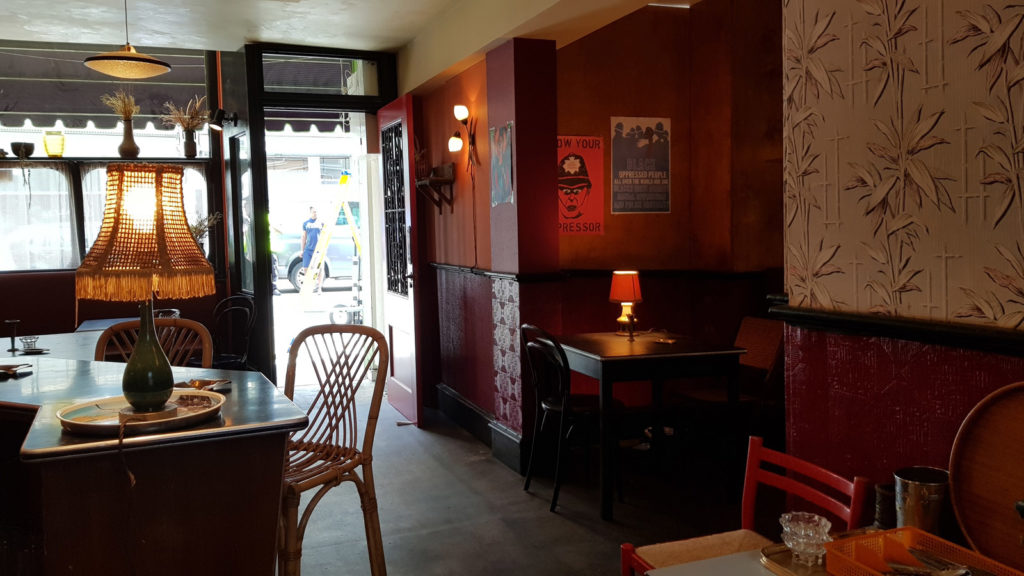
What was your big break?
It was getting to work with Andrea Arnold. I had known Andrea for some time before she started directing and she asked me to design Dog, which was her second short, and then Wasp which was, of course, hugely successful. And then Fish Tank followed! I recognised that this was a watershed moment for me, that I should grasp the momentum, and I found a lovely agent who took me on and I’m still with her. She has helped enormously with shaping the progress of my career, which I genuinely wouldn’t have managed without her.
Who or what are your biggest inspirations?
It’s the things I see around me, the lives of people I come across in ordinary ways, their homes, the way they are in the workplace, or just out and about. I’m probably an anthropologist as much as I am a designer! I absorb the detail of everyday life and apply that to my work.
What are the key qualities of a great production designer?
I think a designer should be brave and remember that what they bring is uniquely theirs. There is no right and wrong way to design. It evolves through listening, observing, communicating and collaborating. Understanding that your input must dovetail into the whole is important, as is having the flexibility to respond positively when everything changes. You also need physical and mental stamina. You often need to be at several locations in any given day and to keep a number of conversations going at once, plus find space for your own thinking time. Invariably you only get that at the end of a long day, which means lots of late nights, broken weekends and zero social life. You do really have to love the job; you can’t be half-hearted. Ultimately it is incredibly rewarding and somewhat addictive.
What are the fundamentals of a successful production designer/DP relationship?
There has to be good communication and lots of exploration. Ideally this begins alongside the early design process. The DP often comes onto the project after the designer does, so it’s important to leave room for the DP to input and influence the design. It is the designer’s job to explain the research and the reasoning behind their own thinking and to work on ways to deliver a mutually satisfying look.
What does your design process entail?
Understanding the script, not just the meaning but also the emotional journey of the characters, researching the time and place and producing tone boards for each beat. I often find a ‘hook’ that feels important and becomes a kind of mantra that reminds me of the crux of what I want to deliver.
I work closely with the location manager, director and DP, and also rely heavily on my own team of art directors, set decorators and graphic designers, to interpret and carry forward to the point of delivery. It’s important to me that I’m on set each morning to hand over, but I leave as soon as I can because I can’t bear to see the set, so carefully planned and dressed, filling up with equipment and crew! Luckily I usually have to be somewhere else, prepping for the next day.
Which have been your favourite productions to work on? And what was your favourite set?
Fish Tank was wonderful. I immersed myself in Mia’s world – went a bit ‘method’ – tried to make every design choice her own, putting myself in her shoes. I loved working on Small Axe. It was fast and furious but incredibly rewarding to be a part of telling those important, overlooked, stories. The Mangrove restaurant was exciting to research and realise, but possibly my favourite set was the Smith household in “Education”. She was a woman who wanted to fit in, not make any fuss and to simply give her children a good education. It was 1969. I made her home very conventional, old-fashioned, calm, Godly, restrained. I think I got it right.
What obstacles do you face in your career and how do you overcome them?
I guess there were obstacles earlier in my career, largely born out of a lack of confidence. It takes time to develop a sense that you are absolutely qualified and able, and at some point I must have recognised that I was being taken more seriously. I took all the opportunities that came my way.
I don’t live in London any more, so I’m always working away from home and spending part of the weekend travelling back and forth. It’s difficult to ever feel rested. I try to ensure a good break between jobs, also to exercise and eat well, generally to ground myself. Obvious stuff really, but it’s something I’ve only come to realise recently.
What advice would you give aspiring production designers?
Don’t be a slave to the computer (although it’s obviously a vital tool). Keep your eyes open, take in everything you see happening around you and store it for later. Learn about the practical world; how things work, how is it made, why those materials, what is the historical or social context – so much to learn! Eventually you’ll start seeing patterns and connections. I always appreciate practical skills in people, to some degree, probably because that’s where I started, so hand-sketching, prop-making, sewing, painting are all useful in my view. You may not often use those skills, but indirectly you will have an understanding of what you are asking others to do for you. All these things will help you to have confidence and allow others to have confidence in you.
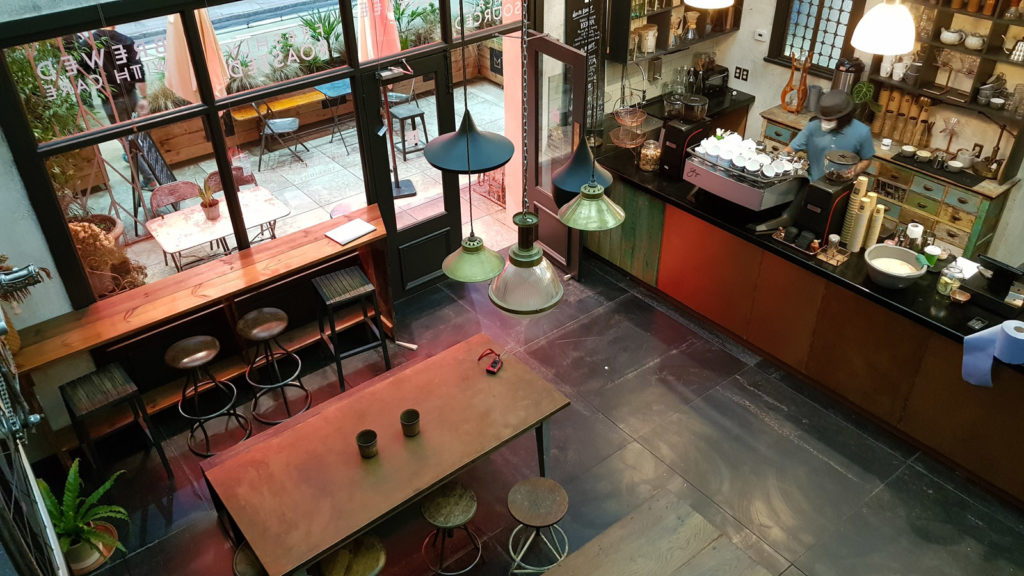
What production has been your biggest challenge?
Andrea Arnold’s Wuthering Heights. Physically, it was really hard core, filming in an isolated, derelict house on the moors, situated a half hour walk uphill along the Pennine Way. The building needed radical structural work to make it safe. This took place in the late summer, along with all the scenic construction and set dec. So I would say that prep was fun, working in the most beautiful landscape, but come the winter and the relentless rain and cold, the mood took a turn and everyone became a bit primal. It took me a while to recover from that one.
Cinematographer Mike Eley BSC says:
“The work of the production designer and the DP are so intertwined and so reliant on each other; it is a relationship that is absolutely crucial for the success of any film. I’ve worked with Helen on three productions and on each occasion, it has been, for me, the perfect collaboration between HoDs.
Our conversations start early and are marked by a generosity-of-spirit that enables a healthy back and forth. As cinematographers, we know it can be the smallest thing in the frame that can make the difference. On films like The Selfish Giant and The Lost Honour of Christopher Jefferies, contemporary stories set close to the real thing, it was the detail Helen brought to the set that gave the camera confidence to inhabit those worlds.”
Cinematographer Jamie D. Ramsay SASC says:
“I have found that each creative relationship is distinctly different from another and along the way I have had all types. My relationship with Helen has been one of the most rewarding thus far, as we seemed to settle into a groove very quickly. The key to our working relationship has been communication and from the very beginning of both projects we worked on together, we aligned our thoughts, firstly taking into account our director’s treatment. We would have lengthy discussions about where our departments come together.
Helen has always been so supportive of my ideas and never hesitated to take me along to the prop houses to look at various props. Her concept art really helped to visualise a scene. I found this invaluable, as I work best with images. I felt that she had an open-door policy and I often found myself visiting her and her team during prep, sometimes for a look at her mood boards and other times for a bit of a chat.
Once we had figured out the overall feel of the film, we generally came together over the bigger set pieces which had a strong duality between lighting and art department. Helen was always willing to reconsider her designs to accommodate a window or give me separation for layered composition.
I believe that the creative bonds forged while making a film are integral to the success of the project and with Helen in your corner you stand in good stead.”
